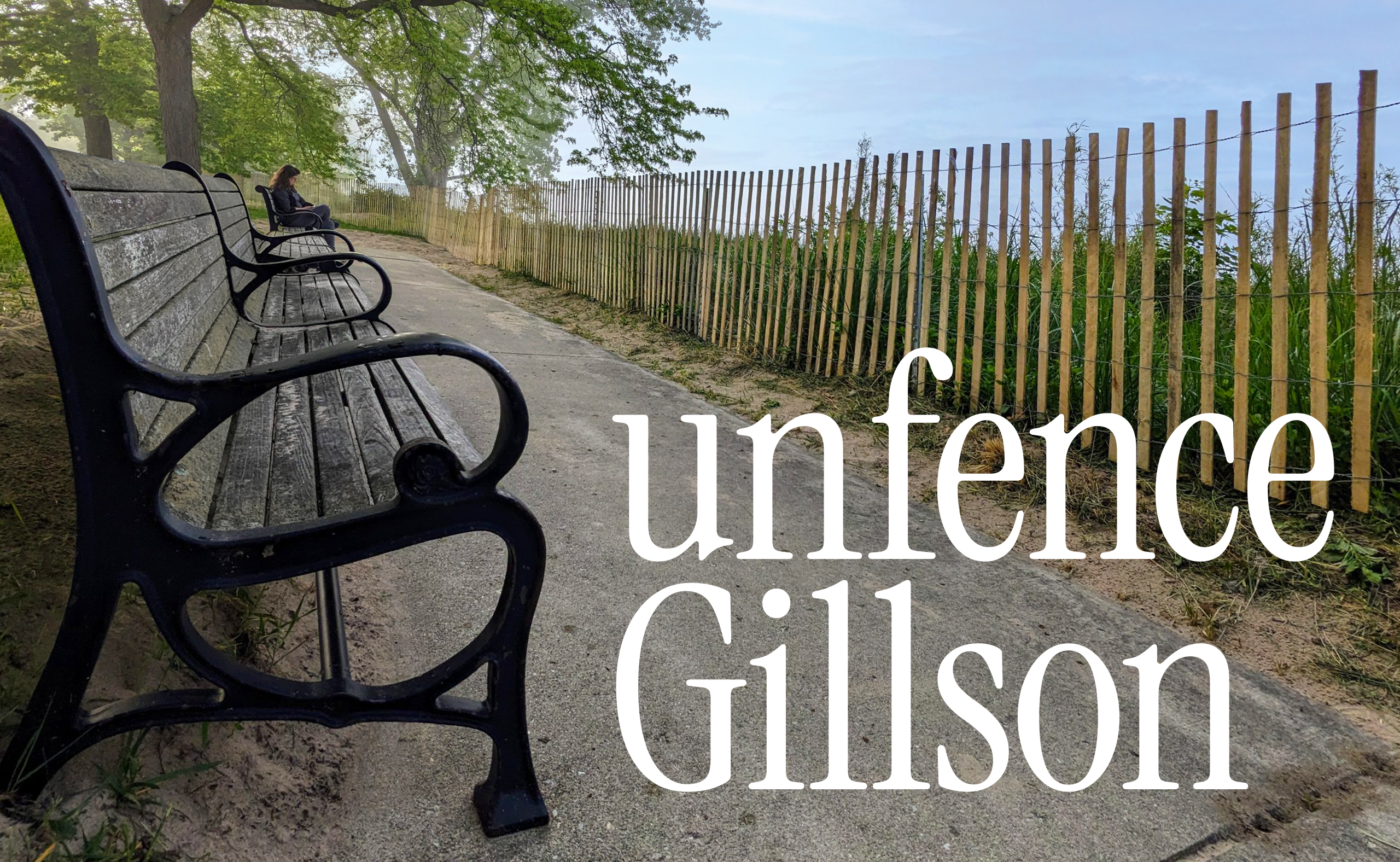Lee Goodman shares a poignant essay highlighting the racial and exclusionary implications of the new fence at Gillson Park. Goodman describes the fence as a barrier that “still largely works to keep people of color away,” reflecting a troubling legacy of exclusion. His personal experiences and historical insights call for more inclusive community policies.
My feet were hurting. We’d been walking for a couple of hours along the Lake Michigan shoreline in Wilmette, a suburb not too far from where we live. I sat down on some rocks a few feet away from the water’s edge. Within a couple of minutes, a kid approached, wearing a jacket with a patch on the shoulder that said he was a security guard. He looked to be in his teens. He told me I had to get off the rocks because they were private. I explained that I just needed to rest for a moment. He said if I wanted to sit down, I would have to go back to the water’s edge, which is public property. I stared at him as I rubbed my foot. He seemed embarrassed to be harassing a senior in my condition and said he’d give me a couple of minutes. Then he walked a short distance up the beach and waited. I put my shoes back on and walked away.
We were not just out for a walk. Wilmette had recently put fences up to keep people off the beach. Well, not all people. Mostly people who don’t live in Wilmette. We went to see the fences and ask people what they thought of them.
Once, the entire Wilmette public beach was open to everyone. Then, years ago, Wilmette decided to charge people who wanted to swim at the part of the beach where the bath house is located. Now they have started charging people to use a part of the beach that was free until this year. They charge outsiders twice as much as Wilmette residents.
Wilmette is not the only town that discourages outsiders from using its beaches. All of the wealthy suburbs north of Chicago do. It’s a practice that began long ago to keep Blacks off the beaches.
Wilmette is not the only town that discourages outsiders from using its beaches. All of the wealthy suburbs north of Chicago do. It’s a practice that began long ago to keep Blacks off the beaches. It still largely works that way, and it also serves to keep other people of color away. According to the latest census, very few Blacks or Hispanics live in Wilmette or most of the other towns that have exclusive beach policies.
We found a handful of teenagers sitting in the park, staring at the beach through the slats of the fence. They said it didn’t seem worth it to pay ten dollars each to get on the beach, but it seemed to me that the beach was where they really wanted to be. We talked with a man who was about my age, sitting on a park bench. He said he was waiting for his family; they had gotten onto the beach for free before the guards showed up, but he had arrived too late. We chatted with a group of teens who said they had been surprised that they couldn’t get on the formerly free beach where they used to, so they were at the one remaining tiny free beach a half-mile away. There are no lifeguards at that beach, but a park district employee stood near them to make sure they didn’t cross an invisible line onto private sand. As we walked along the lakefront, we talked with people who had paid to use the beach. We also talked with those who hadn’t and were only allowed to walk on the wet sand but were not allowed to stop walking or to swim. No one liked the fence or the exclusionary policy.
No one has said that the fences were erected to keep out Hispanic migrants who have recently arrived in town, although the town has done everything it can to keep the migrants out of the town altogether.
When people started complaining about the fences, the park district said they were erected because some people had not been behaving well on the beach. The district hasn’t given much of an explanation of what this misbehavior was or whether the miscreants were actually non-residents. There haven’t been any reports of any serious criminality on the beach. Everyone, even the park attendants we talked with, seemed to assume the infractions were nothing more serious than some kids smoking or drinking where they shouldn’t. No one has said that the fences were erected to keep out Hispanic migrants who have recently arrived in town, although the town has done everything it can to keep the migrants out of the town altogether.
It’s obvious that the Wilmette Park District has made a mistake by putting up the fences. It didn’t understand that the people in their town want outsiders to feel welcome, and that they are willing to share their beach with them. There are plenty of ways to solve whatever small problems arise at the beach without turning it into an exclusive members-only club. The question now is whether the people who were elected to serve on the Park District Board will be willing to admit they were wrong or will at least find a face-saving way to reverse their unpopular policy. The public is invited to attend the Park District Board meeting this Monday evening, June 10. We’ll see what people have to say and whether they are listened to.
Lee Goodman, posted to Facebook June 8, 2024


Comments
3 responses to “Exclusionary Practices at Gillson Park: A Personal Insight by Lee Goodman”
This policy punishes everyone who wants to enjoy the beach, resident and non-resident alike. The idea of inclusion is mere lip service from the Park District interested primarily in monetizing park usage. Fencing the beach was rejected by the community in 2012 and 2015. The fence plan was announced with no community input or discussion. Same with the destructive planned widening of Harbor Drive.
Excellent article!
The open South Beach at Gillson was a boon for Seniors who wanted to come and sit on the benches, then do limited walking on the beaches and then depart. Day after day, it’s been a great spot to begin conversations, to chat with visitors from literally all over the world who come to Chicago. Or just with mothers and toddlers eagerly making their way to the beach.
You can read, daydream, imagine Lake Michigan to be the ocean (you can’t see to the other side. . .).
I don’t remember seeing anyone from any age, social class, or ethnic group not respect lovely Gillson’s South Beach area. Charming nooks and crannies, moss-edged wooden benches. It’s now an insult to the senses to sit nose-to-nose with chicken wire and cheap plywood closing each inviting entrance.